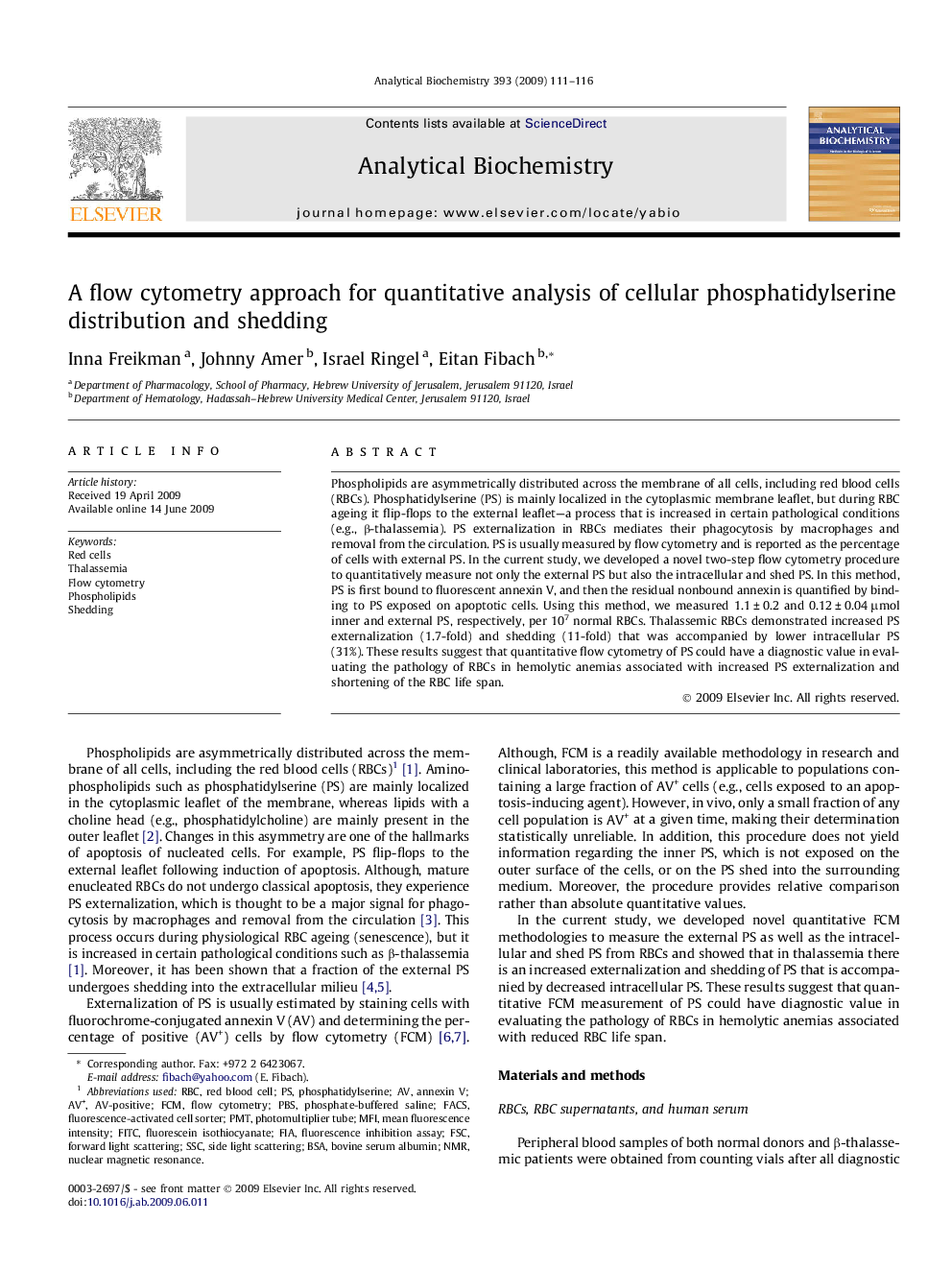| Article ID | Journal | Published Year | Pages | File Type |
|---|---|---|---|---|
| 1175082 | Analytical Biochemistry | 2009 | 6 Pages |
Phospholipids are asymmetrically distributed across the membrane of all cells, including red blood cells (RBCs). Phosphatidylserine (PS) is mainly localized in the cytoplasmic membrane leaflet, but during RBC ageing it flip-flops to the external leaflet—a process that is increased in certain pathological conditions (e.g., β-thalassemia). PS externalization in RBCs mediates their phagocytosis by macrophages and removal from the circulation. PS is usually measured by flow cytometry and is reported as the percentage of cells with external PS. In the current study, we developed a novel two-step flow cytometry procedure to quantitatively measure not only the external PS but also the intracellular and shed PS. In this method, PS is first bound to fluorescent annexin V, and then the residual nonbound annexin is quantified by binding to PS exposed on apoptotic cells. Using this method, we measured 1.1 ± 0.2 and 0.12 ± 0.04 μmol inner and external PS, respectively, per 107 normal RBCs. Thalassemic RBCs demonstrated increased PS externalization (1.7-fold) and shedding (11-fold) that was accompanied by lower intracellular PS (31%). These results suggest that quantitative flow cytometry of PS could have a diagnostic value in evaluating the pathology of RBCs in hemolytic anemias associated with increased PS externalization and shortening of the RBC life span.
